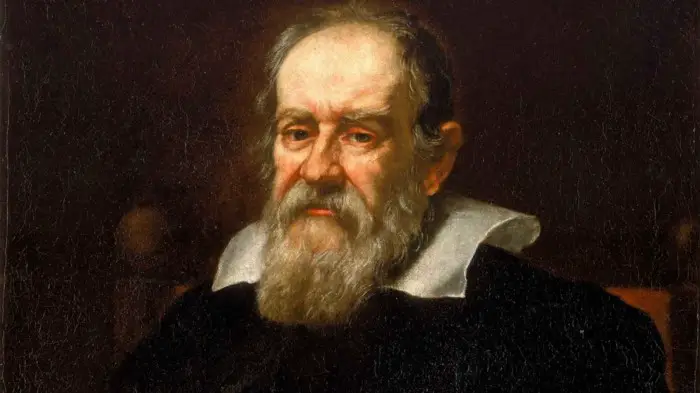 alileo Galilei was one of the most renowned scholars of the Renaissance. Astronomer, physicist, engineer, philosopher and mathematician, Galilei played a key role in the Scientific Revolution and remained in history for his conflict with the Roman Inquisition: as a supporter of the heliocentric theory, Galilei was judged by the Inquisition for heresy, forced to disavow her. of his convictions and to spend the rest of his life in house arrest.
alileo Galilei was one of the most renowned scholars of the Renaissance. Astronomer, physicist, engineer, philosopher and mathematician, Galilei played a key role in the Scientific Revolution and remained in history for his conflict with the Roman Inquisition: as a supporter of the heliocentric theory, Galilei was judged by the Inquisition for heresy, forced to disavow her. of his convictions and to spend the rest of his life in house arrest.
The Inquisition was a group associated with the Catholic Church with the job of getting rid of any heresy, in this case, any people that are trying to disapprove of the religious beliefs brought by Catholics as to the making or existence of humankind and earth. The first sight of the inquisition was around the beginning of the 12th century in medieval France, their first major conflicts were with the Waldensians and the Cathars.
Galileo Galilei was born in Pisa in 1564, into the family of musician Vincenzo Galilei. Galileo, the first of six children in the family, became a good musician himself but was encouraged by his father to pursue a career in science, specifically medicine. Convinced Catholic, Galileo was tempted to become a priest, but at the insistence of his father, he enrolled in medical courses at the University of Pisa. But he was more attracted to mathematics and gave up medicine to devote himself to the study of this science.

He was still very young when he invented the thermoscope, the precursor to the thermometer. In 1589, Galileo received the chair of mathematics from the University of Pisa, where he taught until 1592 when he moved to Padua to teach geometry, mechanics, and astronomy. In July 1609, Galileo learned about the invention of the telescope and soon made one himself. It was a key moment for Galilei, who thus began to turn his attention to heaven. He discovered that the Moon was neither flat nor smooth, but that it was a sphere with mountains and craters.
He discovered that Venus has several phases, like the Moon, thus demonstrating that the planet rotates around the Sun. He also discovered that Jupiter has its own satellites, which revolve around it, not the Earth, yet another proof that the geocentric theory according to which celestial bodies revolve around our planet is not correct.
Galileo thus began to gather more and more evidence in support of Copernicus’ theory (the heliocentric theory), contradicting the official doctrine of the Church — despite the fact that he was a faithful man. However, he considered that the heliocentric theory is not in contradiction with the Bible, claiming that the scripture was written from an earthly perspective and that science simply offers a different, more accurate perspective.

Because of these theories, Galileo Galilei came to the attention of the Inquisition, which considered Copernicus’s theory to be heretical. In 1616, Galilei was ordered not to teach or defend this theory in any way, an order which the scientist followed for seven years, partly because he did not complicate his situation, partly because he was a faithful Catholic.
However, in 1623, Cardinal Maffeo Barberini, a friend of Galilei’s, became Pope, under the name of Urban VIII, and allowed him to continue his work in astronomy and even publish it, provided it remained objective and does not support the heliocentric theory. In 1632, Galilei published Dialog on the two main systems of the world, a work built as a dialogue between three characters: a supporter of Copernicus’s theory, an opponent of it and an impartial character. Although the scientist argued that his work was a neutral one, the Inquisition was of another opinion.

Thus, Galileo Galilei was called to Rome and judged by the Inquisition on the charge of heresy. The trial took place between September 1632 and July 1633, during which time the scientist was not closed. But he was threatened with torture for being forced to give up. Thus, Galileo Galilei admitted that he had supported the heliocentric theory and that his work could be interpreted as supporting this theory. Convicted of heresy, Galilei, who never really gave up on her beliefs, was kept under house arrest until the end of her life.
Galileo Galilei died in January 1642, at the age of 77. The ruler of the Grand Duchy of Tuscany at that time, Ferdinand II, wanted the scholar to be buried in the central body of the Basilica of the Holy Cross in Florence, but Pope Urban VIII opposed — Galileo had been condemned by the church for heresy. Buried elsewhere, his body was moved to the central body of the basilica in 1737 when a memorial was also inaugurated in his honor.
Avid Writer with invaluable knowledge of Humanity!
Upcoming historian with over 30 million views online.
“You make your own life.”





